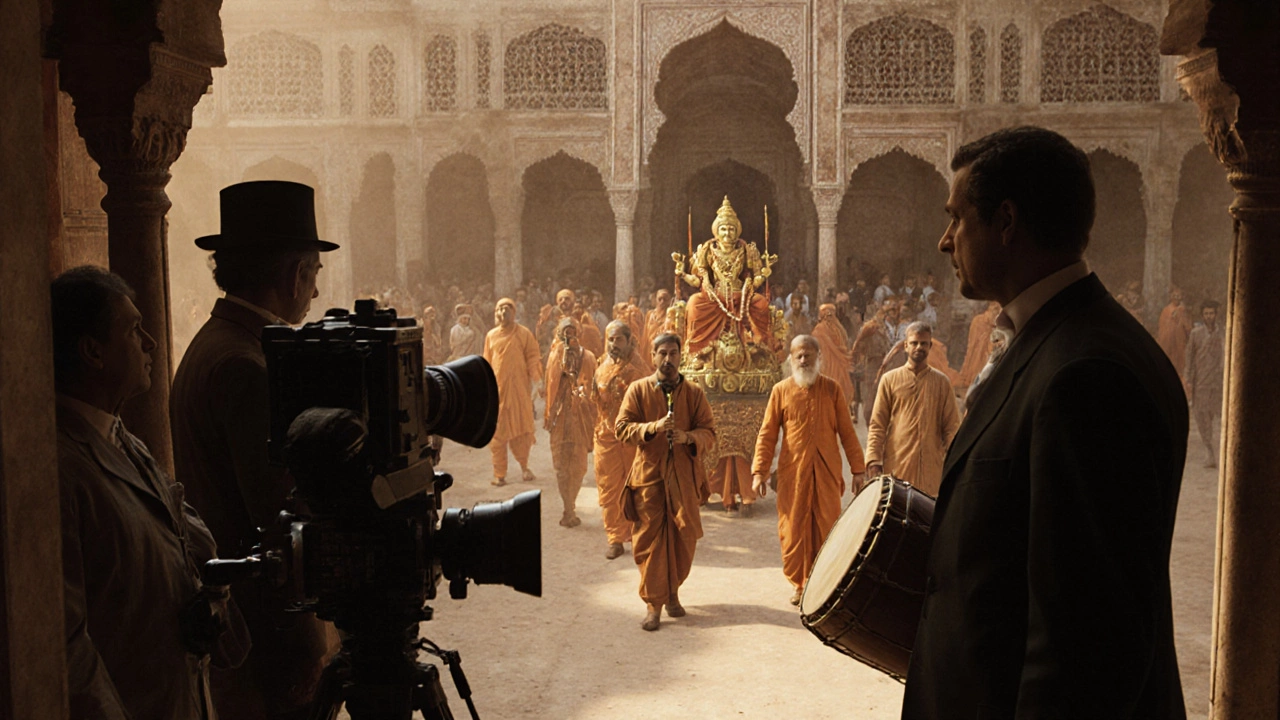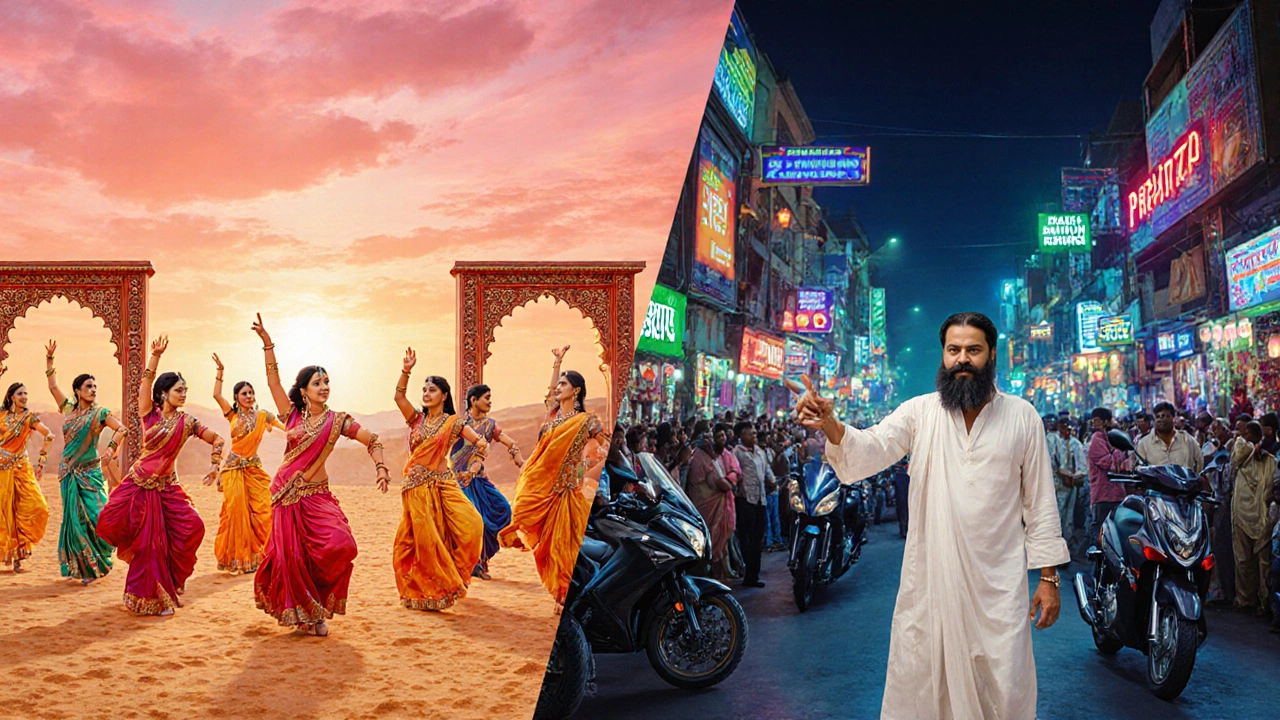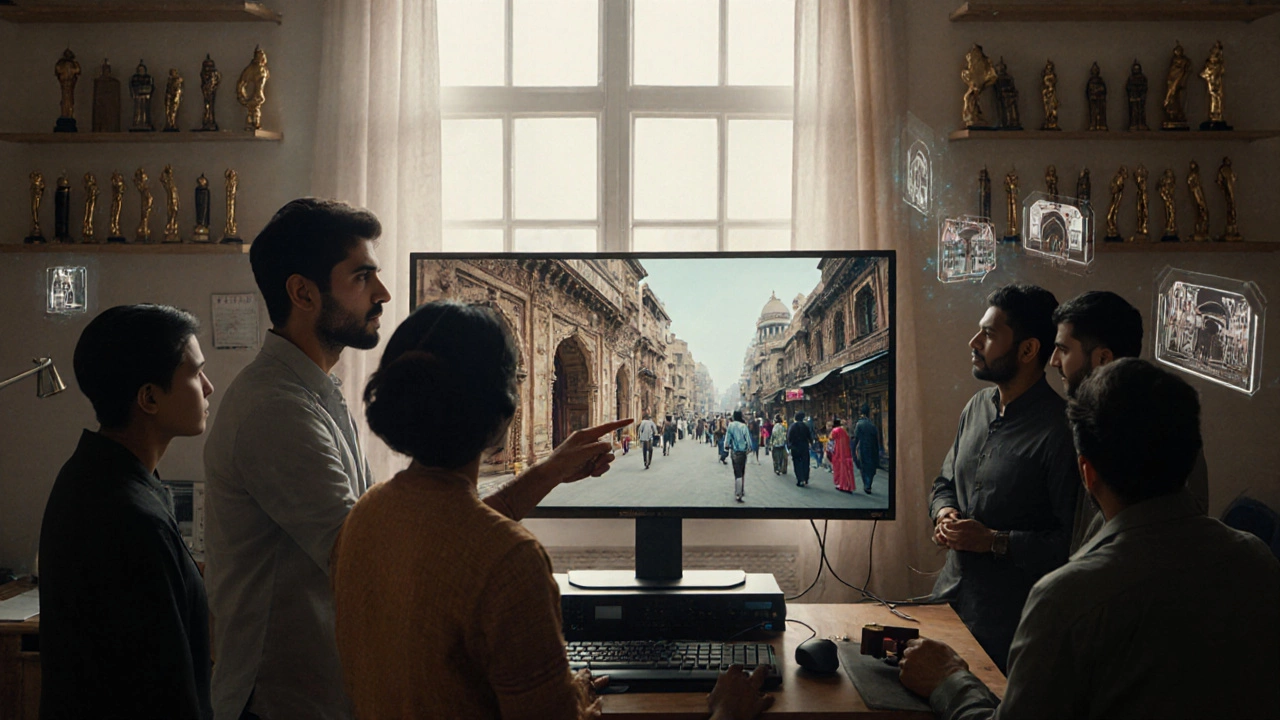How India is Portrayed in Movies - From Bollywood to Hollywood
 Oct, 20 2025
Oct, 20 2025
Key Takeaways
- Bollywood often glamourises Indian culture, while Hollywood leans on exotic stereotypes.
- Parallel cinema and regional films provide more nuanced, locally rooted depictions.
- Diaspora directors like Mira Nair bridge Indian and Western narratives, challenging clichés.
- Nationalism and post‑colonial narratives shape how history is visualised on screen.
- Spotting recurring tropes helps viewers critically assess any film’s portrayal of India.
When you hear the phrase India in movies, you probably picture colorful song‑and‑dance numbers, bustling markets, and heroic monks. But the reality is far richer - and often messier. From the grand stages of Bollywood to the bustling set‑lists of Hollywood, filmmakers have painted India in countless shades, each reflecting their own cultural lenses, commercial goals, and political moments. This guide walks you through the main ways India has been portrayed, the forces driving those images, and how you can read them with a critical eye.
India in movies refers to the collection of visual representations of India’s people, landscapes, history, and culture that appear across global cinema spans more than a century, starting with colonial-era silent reels and stretching into today’s streaming‑driven blockbusters.
1. Historical Roots - From Colonial Gaze to Post‑Independence Narrative
The first moving pictures showing India were shot by British explorers and missionaries in the late 1800s. Those early clips highlighted exotic scenery, ceremonial processions, and the “mysterious East” notion that reinforced imperial power. Scholars at the University of London note that over 70 percent of these films featured Indian subjects as background for Western storylines, not as protagonists.
After 1947, Indian filmmakers seized cinema as a nation‑building tool. The newly independent state funded movies that glorified the freedom struggle, rural life, and collective progress. Films like Mother India (1957) and Ganga Jamuna (1961) presented India as a resilient mother figure, embodying both suffering and moral strength.
2. Bollywood’s Domestic Lens - Romance, Drama, and Spectacle
Bollywood refers to the Hindi‑language film industry centred in Mumbai, known for its musical narratives and mass‑appeal storytelling has shaped the most widely recognised image of India abroad. Its hallmark is a blend of romance, family drama, and elaborate dance sequences that often take place in opulent sets or picturesque locales like Rajasthan’s deserts or Kerala’s backwaters.
While Bollywood celebrates diversity, it also leans on recurring tropes: the over‑protective patriarch, the arranged‑marriage dilemma, and the “rich vs. poor” love story. These formulas help sell tickets but risk flattening complex social realities. For instance, a 2022 audience survey of 3,000 viewers across the US and India found that 48 % associated Indian culture primarily with Bollywood’s song‑and‑dance aesthetic, even though only 12 % of Indian films produced that year were true Bollywood productions.
3. Hollywood’s Exotic Gaze - Stereotypes and Shifting Narratives
Hollywood refers to the American film industry, which historically portrayed foreign cultures through a lens of exoticism and adventure has a long track record of using India as a backdrop for adventure, spirituality, or “exotic danger.” Classic examples include Gunga Din (1939), Carry On India (1969), and more recent blockbusters like Slumdog Millionaire (though a British‑Indian co‑production, it was marketed heavily in the US).
Typical Hollywood motifs include: mystic yogis, chaotic traffic, chaotic bazaars, and the “Indian gangster” archetype. However, the 2010s saw a turn toward more nuanced stories, as seen in films like The Best Man Holiday (2021) featuring a supportive Indian family, or Planet of the Apes: War (2023) which consulted Indian cultural advisors for authenticity.

4. Parallel Cinema and Regional Voices - Grounded Realism
Parallel cinema refers to the Indian art‑film movement that began in the 1950s, focusing on realistic storytelling and social critique offers a counterbalance to mainstream glitter. Filmmakers like Satyajit Ray, Mrinal Sen, and later Anurag Kashyap have used the medium to depict India’s gritty underbelly-rural poverty, caste discrimination, and urban alienation.
Ray’s Pather Panchali (1955) presents Bengal’s agrarian life with poetic restraint, while Kashyap’s Gangs of Wasseypur (2012) immerses viewers in the violent coal‑mining belt of Jharkhand, using local dialects and authentic landscapes. These films rarely reduce India to a single stereotype; instead, they treat the nation as a collection of divergent stories.
5. Diaspora Filmmakers - Bridging Two Worlds
Mira Nair is an Indian‑American director known for cross‑cultural films that explore identity, migration, and the Indian diaspora and Anurag Kashyap is an Indian filmmaker who blends gritty realism with stylistic flair, often portraying urban India from a contemporary perspective have reshaped how India appears on screen for global audiences. Nair’s Monsoon Wedding (2001) juxtaposes traditional family expectations with modern romantic freedom, while Kashyap’s Dev.D (2009) re‑imagines a classic literary figure in today’s Delhi, tackling substance abuse and broken relationships.
These directors frequently employ a “dual‑lens” approach: Indian settings are explored with a western storytelling sensibility, allowing them to critique both Indian and western cultural norms. The result is a richer, more layered picture of India than either Bollywood or Hollywood alone can provide.
6. Nationalism and Post‑Colonial Themes - The Politics of Image
Since the early 2000s, an uptick in nationalist cinema has altered portrayals. Films like Uri the Surgical Strike (2019) and Raazi (2018) foreground Indian military prowess and intelligence, presenting a confident, assertive national identity.
At the same time, post‑colonial scholars argue that many of these narratives rewrite history to suit contemporary political agendas. For example, the 2021 film Shershaah glorifies the Indian army’s actions in Kashmir while downplaying the civilian cost-a pattern echoed across several regional releases.

7. Comparative Snapshot - How Different Industries Frame India
| Aspect | Bollywood | Hollywood | Parallel Cinema |
|---|---|---|---|
| Primary Goal | Entertainment + cultural celebration | Exotic backdrop + marketable drama | Social critique + realism |
| Common Tropes | Romantic families, song‑and‑dance | Spiritual guru, chaotic market | Caste tension, poverty, urban decay |
| Typical Settings | Palatial sets, scenic locales | Monuments, bustling streets | Real neighborhoods, villages |
| Audience Reach | Massive domestic & diaspora | Global mainstream | Festival circuit, niche viewers |
| Representation Depth | Glossy, sometimes stereotypical | Surface‑level, exoticized | Complex, nuanced, often critical |
8. Spotting Tropes - A Quick Checklist for Viewers
- Music overload: Does the film rely on extravagant song‑and‑dance to convey emotion? Likely Bollywood or a Hollywood mimic.
- One‑dimensional characters: Are Indian characters reduced to “exotic helper” or “villain”? Common in Hollywood.
- Real locations vs. set pieces: Authentic street sounds, local dialects, and on‑location shooting point to parallel or regional cinema.
- Political undertones: If the plot glorifies national institutions or revisits colonial history with a modern spin, it may be part of nationalist or post‑colonial narratives.
- Cross‑cultural dialogue: Presence of diaspora characters, bilingual dialogue, or an international director suggests a bridging perspective (e.g., Mira Nair).
9. Future Trends - Where Is the Portrayal Heading?
Streaming platforms like Netflix and Amazon Prime are democratizing production. Series such as Delhi Crime (2019) and Masaba Masaba (2020) blend gritty realism with global appeal, further blurring the line between Bollywood glamour and parallel‑cinema authenticity. Moreover, AI‑generated backgrounds are enabling filmmakers to recreate historic Indian cityscapes without costly set builds, potentially ushering in a wave of period pieces that can afford higher fidelity to actual architecture.
Another trend is the rise of regional streaming originals-Tamil, Telugu, Malayalam, and Marathi shows are gaining worldwide subtitled audiences, expanding the palette of Indian representation beyond the familiar Hindi‑centric view.
Conclusion - Reading India on the Silver Screen
India’s cinematic image is not static; it shifts with political mood, market forces, and creative ambition. Knowing the origins of each portrayal-whether it’s Bollywood’s festive spectacle, Hollywood’s exotic lens, or parallel cinema’s stark realism-lets you enjoy the film while staying aware of its underlying narrative agenda.
Why do Bollywood movies often feature elaborate song‑and‑dance numbers?
Song‑and‑dance is a storytelling tradition that dates back to Indian theater and is used to express emotions, advance plot, and provide a visual spectacle that appeals to a broad audience.
What are common stereotypes of India in Hollywood films?
Hollywood often leans on the mystic guru, chaotic market, or dangerous thug tropes, presenting India as an exotic backdrop rather than a nuanced society.
Which Indian directors are known for realistic portrayals?
Satyajit Ray, Anurag Kashyap, and Shyam Benegal are celebrated for films that focus on social issues, everyday life, and authentic regional settings.
How has streaming affected Indian film representation?
Streaming platforms fund diverse regional projects, give creators more creative freedom, and bring niche stories to global viewers, reducing reliance on formulaic Bollywood tropes.
Can I spot authentic Indian culture in a Hollywood film?
Look for on‑location shooting, use of local languages, and consultation with cultural advisors; these signs often indicate a more authentic portrayal.